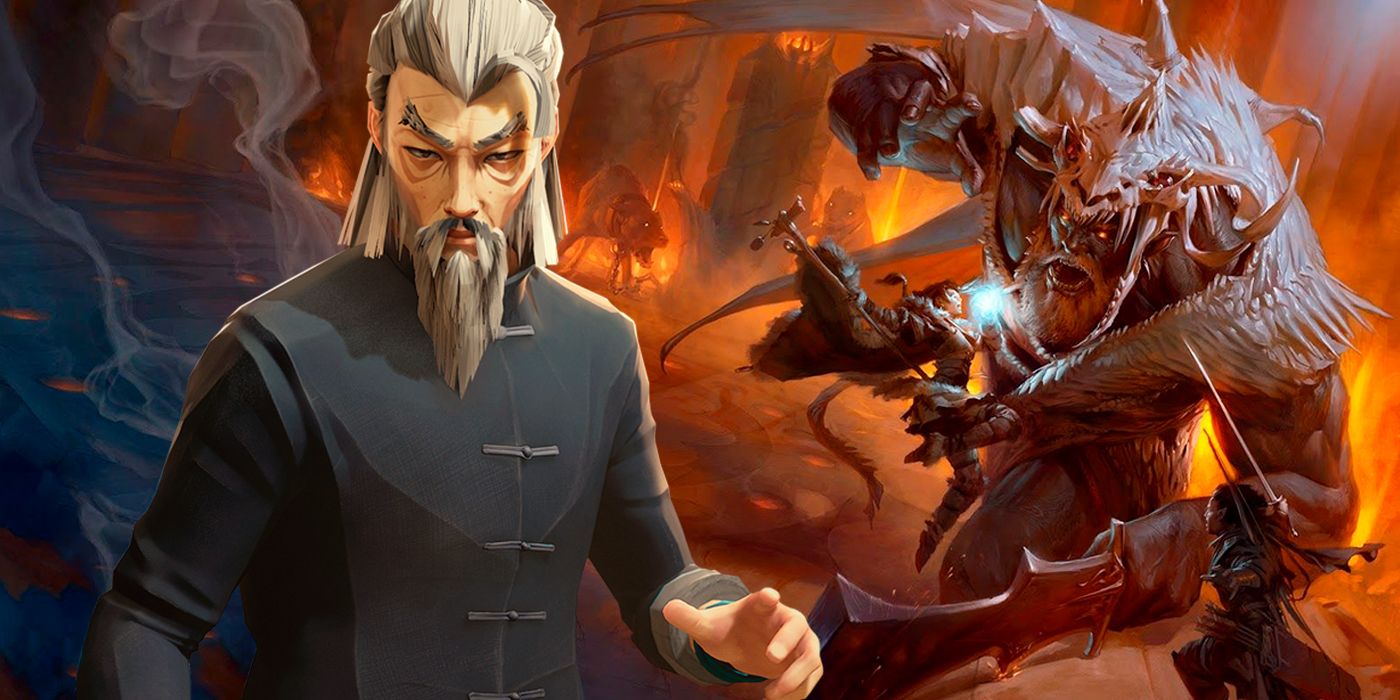While the usual Dungeons & Dragons mechanics can make for an enjoyable campaign, sometimes players and Dungeon Masters alike want to try something a little different without learning an entirely new tabletop system. Homebrew rules can be a great way to give a new campaign a unique flare that helps it stand out from the typical D&D experience. Video games can be a great inspiration for new homebrew rules, with the recent hit Sifu being a great example.
Mixing roguelike mechanics and D&D might sound like an odd mix at first, but tabletop games actually already share a lot of traits with roguelikes. Not only is death permanent in both types of games, but there's also a sense of progression when it comes to how characters grow in strength. Sifu, a martial arts-inspired roguelike developed by Sloclap, has a unique approach to both permadeath and progression that can fit quite well into D&D Fifth Edition.
In Sifu, the player character can learn new combat moves and increase their skills each time they die. The tradeoff is that dying increases their age, eventually leading to an actual game over once the character gets old enough. The skills that players learn aren't kept between game overs unless players spend enough experience points on those skills to unlock them permanently. It's a relatively simple system that ends up completely changing how players look at death.
Making this work in D&D requires some minor tweaks and a new class resource, but it is not difficult to implement. This homebrew ruleset can be applied to all classes or (for those wanting to stay as accurate to Sifu as possible) just the Monk class. It comes down to a slight change in what resource the resurrection mechanic uses, with ki points being used instead of the unique resource these rules will use.
The goal for this homebrew ruleset is for it to work alongside normal leveling while still capturing the strategy of Sifu's resurrection mechanics. To start out, characters should have a number of resurrection points equal to their level plus their Wisdom modifier. On death, characters can assign these resurrection points as temporary buffs to their attack modifiers. Given that a character's attack modifier is their chance to hit, it works as a good stand-in for learning new techniques in Sifu.
Players can also increase things like weapon durability, health gained on takedowns and dodging ability in Sifu. To represent this, D&D players can have the option to spend two resurrection points to temporarily increase one of their core stats by one. This would have the effect of buffing the skills that correspond to said stat, allowing the character to do more with their proficiencies. If DMs want to get even more technical, they could also create a set of unique abilities that cost resurrection points to unlock.
All of these buffs unlocked with resurrection points are temporary and come with some hefty downsides. Each time a character dies and resurrects, they're required to age up by the number of times they've resurrected in a row plus their level. This ensures that frequent resurrections create bigger drawbacks while also scaling the drawbacks with the player's level. DMs could choose an age to be the permanent cut-off or can have it be dependent on the player character's race.
Another major drawback that this system aims to recreate is how Sifu's player character's damage and health change as they age. As the years progress, they do more damage to enemies but have less max HP. There are a few ways that DMs can recreate this in D&D. There's always the straight recreation approach, where a character's health decreases by their max Hit die, but they gain an extra Damage die for their attacks. Another option is to tailor the stats gained and lost to the character's class.
This set of homebrew rules is merely a loose suggestion for how players can adapt the mechanics of Sifu to their next D&D campaign. For those who want to get a bit more in-depth, these rules would also lend themselves well to a unique subclass or as a feat. Going this route would also let DMs add some unique abilities that are much closer to Sifu than what this simplistic homebrew ruleset allows.
With the rules as they are, however, the system introduces similar mechanics to Sifu that apply to a wide range of classes. The important thing is that everything is kept relatively balanced, especially since this kind of system could easily reward dying. Giving players the ability to resurrect can quickly get out of hand, so it's always important to make sure these kinds of rules fit the style of the campaign before implementing them.



